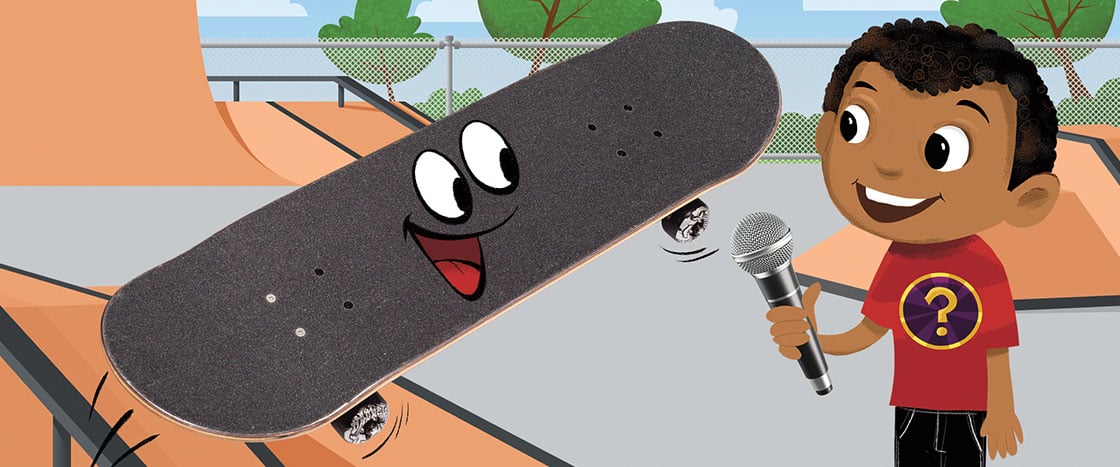ILLUSTRATIONS BY JEFF HARVEY
Hi! I’m Question Mark.
Before you read, practice saying these words:
- balance
- compete
- Olympics

Listen closely to Question Mark’s in-depth interview with a skateboard.
ILLUSTRATIONS BY JEFF HARVEY
Hi! I’m Question Mark.
Before you read, practice saying these words:
Question Mark: Hi! I am here with a skateboard.
Skateboard: What’s up, dude?
Question Mark: My first question is, How can I ride you?
Skateboard: It’s easy! Just stand on me with one leg. Use your other leg to push forward. It just takes a little balance. Oh, and always wear a helmet.
Question Mark: I can do that! What are you made out of?
Skateboard: The part you stand on is called the deck. It is made of wood. I also have four wheels. They are made of plastic.
Question Mark: Where did you come from?
Skateboard: The very first skateboard was made in California in the 1950s.
CHARLES LEHMAN
Question Mark: Awesome! Why do people like riding you?
Skateboard: I am cool because people of all ages can ride me. Sky Brown is the youngest person to earn money for skateboarding. She is only 13 years old.
Question Mark: Sounds cool! Do the best skateboarders compete anywhere?
Skateboard: They can compete in a lot of events—even in the Olympics! They compete against skateboarders from countries all over the world.
Question Mark: Wow, skateboard! I’m going to start practicing. I want to do an ollie.
Skateboard: Good luck, dude!
More About the Article
Social Studies Focus
Culture; Kinds of technology
1. BEFORE READING
Preteach Vocabulary (3-5 minutes)
Pair Kids Up
Preteach Navigating the Page (3 minutes)
2. READ THE INTERVIEW MULTIPLE TIMES (15-30 MINUTES)
3. AFTER READING
ELA Focus: Vocabulary (15 minutes)
Craft Extension: Make a Microphone (20 minutes)
We will have a Question Mark interview in every issue. Kids can make microphones from balls of tinfoil and toilet paper rolls to use for the interviews. Just stuff the tinfoil ball into one end of the toilet paper roll. You can keep these all year long!